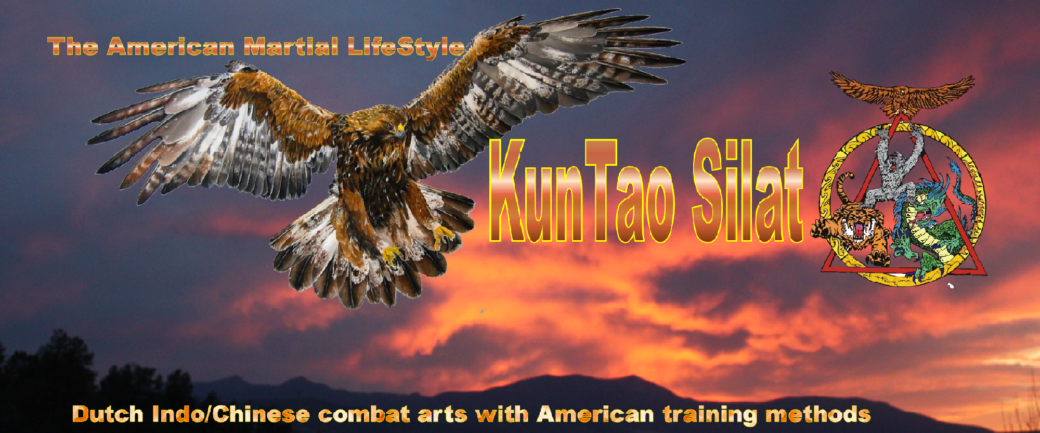Recently, I was asked an excellent question by a member of the Distance Learning Program: “What is the difference between Malabar and American KunTao Silat?”
The answer can be simple or complex.
Simple answer: Malabar KunTao Silat is the original curriculum granted to Pak Steve by the De Thouars family First Lineage Disciple, and contains the “Old Hand” Pentjak Silat and KunTao methods from Pre-WW2 Indonesia. It is a closed system to be preserved and passed on. American KunTao Silat was Pak Steve’s personal refinement of his martial arts, modified to make them more approachable to novice martial artists or those with physical limitations. It shares the Internal Poquazen of Grandmaster Bill Chang from the outset and emphasizes the healing aspects of martial exercise equally alongside the destructive capacity of martial arts. The curriculum of American KunTao Silat continues to evolve and change as Pak Steve explores the best methods for sharing the martial arts with others.
Going deeper (and tying in to my previous post) Malabar KunTao Silat focuses on the Silat and Shaolin Destruction Theories. These are predicated upon developing and maintaining a high level of dynamic athleticism requiring unusual levels of flexibility, functional strength, cardiovascular fitness, and agility. Silat and Shaolin KunTao make use of low stances, leaps, extensive Iron Skills development, and tendon and muscle training. There is a high potential of injury in the conditioning exercises for those without an existing martial arts or similar background and/or sufficient youth and discipline. The payoff of such grueling training is a physical ability and mental discipline unusually developed, but it is very hard work. Pak Steve has often told me that unless someone was already a well conditioned martial artist with little or no chronic injuries, he would not recommend Malabar to anyone over thirty years of age. The demands on the tendons and ligaments can be too much.
American KunTao Silat was thus born out of a desire to make the effective self protection skills and health benefits of KunTao Silat available to an older and/or less physically able (at least at the outset) crowd. While the fundamentals of Pentjak Silat and its Destruction Theory remain, students skip the deeper, more complex Silat stances and the vigorous Shaolin training and go straight into the “Internal” arts as taught to Pak Steve by Grandmaster Bill Chang. “Internal” training is by no means “easier” than Shaolin, but it is less potentially injurious as the postures are held higher, the movements are less jarring on the joints, and extra time is spent on meditative awareness and subtle movements from the onset of practice. Iron Body skill, cardiovascular exercise, functional strength, and flexibility are still trained, but done in a more gradual and forgiving manner. The Taoist Destruction Theory involves the recruitment and training of the tendons and fascia and allows for continued development and improvement of power and skill even into old age. The athletic prowess of an Internal Arts player is often a shock to the uninitiated when encountered: “Wow! They are a lot stronger than they look!”
Ultimately, both curriculums are but doors into KunTao Silat, as either approach leads the practitioner into developing their own Personal Martial Lifestyle.
Dr Jon
Discover more from KunTao Silat
Subscribe to get the latest posts sent to your email.

No comments yet.